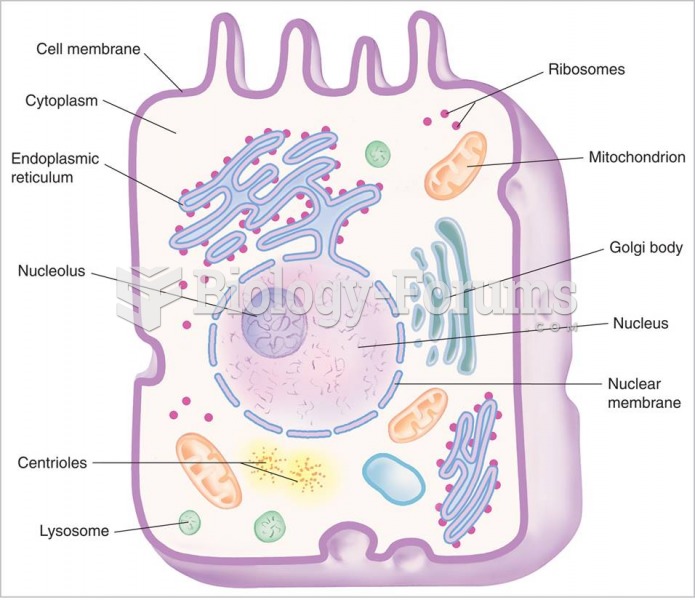|
|
|
Cyanide works by making the human body unable to use oxygen.
The toxic levels for lithium carbonate are close to the therapeutic levels. Signs of toxicity include fine hand tremor, polyuria, mild thirst, nausea, general discomfort, diarrhea, vomiting, drowsiness, muscular weakness, lack of coordination, ataxia, giddiness, tinnitus, and blurred vision.
Children with strabismus (crossed eyes) can be treated. They are not able to outgrow this condition on their own, but with help, it can be more easily corrected at a younger age. It is important for infants to have eye examinations as early as possible in their development and then another at age 2 years.
Medication errors are three times higher among children and infants than with adults.
The types of cancer that alpha interferons are used to treat include hairy cell leukemia, melanoma, follicular non-Hodgkin's lymphoma, and AIDS-related Kaposi's sarcoma.
 Volvulus. A length of small intestine has twisted around itself, cutting off blood circulation to th
Volvulus. A length of small intestine has twisted around itself, cutting off blood circulation to th
 The lymphatic system. Lymphatic vessels, major lymph nodes, and lymphatic organs. The direction of l
The lymphatic system. Lymphatic vessels, major lymph nodes, and lymphatic organs. The direction of l





